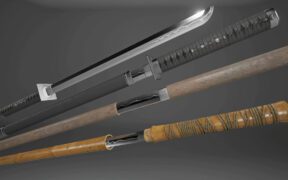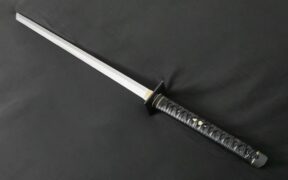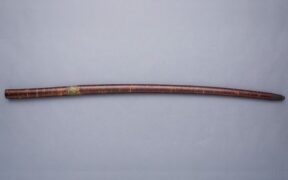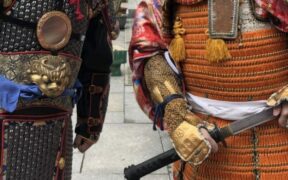Our content features commercial links to our products, committed to transparent, unbiased, and informed editorial recommendations. Learn More
Did Ninjas Use an Alternative Sword to the Katana?
NO AI USED This Article has been written and edited by our team with no help of the AI
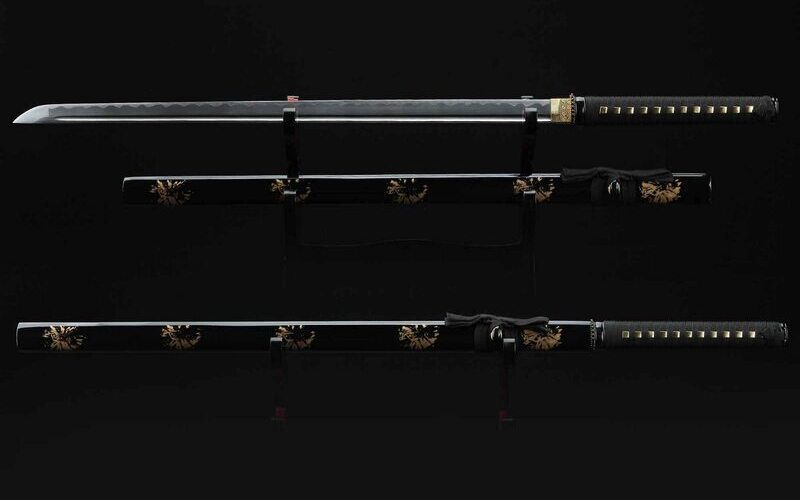
While many associate the katana with traditional Japanese warriors, ninjas often preferred a distinct blade known as the ninjato or ninja sword. The ninjato was shorter than the katana and suited the stealthy tactics of the ninja.
The ninjas were spies and assassins of feudal Japan who were renowned for their unorthodox use of the ninja sword. They generally used the sword for close-range fighting, primarily for stabbing, but it also served many different purposes. In fact, their sword techniques greatly differed from those of the samurai, making them elusive and unpredictable.
Let’s explore the history of the ninja sword, how ninjas used them, and its significance in modern-day ninjutsu.
Characteristics of the Ninja Sword
There are several misconceptions about the appearance of the ninja sword. However, any sword that belonged to a ninja can be called a ninjato. Today, popular depictions of a ninjato feature a straight blade and a long handle.
Here are the general characteristics of a ninja sword:
Metal and Construction
The ninjas had difficulty acquiring high-quality blades and often recovered abandoned swords found on the battlefield. They often used stolen samurai swords and even turned discarded broken blades into useful weapons. Regardless of the material and quality, ninja swords served as multifunctional weapons.
Ninja sword replicas have varying quality, depending on their use. The so-called battle-ready swords used in cutting practice have full tang blades, are often made of high carbon steel, razor-sharp, and properly tempered. In cosplay and historical reenactments, ninja swords often have stainless steel blades.
Blade Appearance
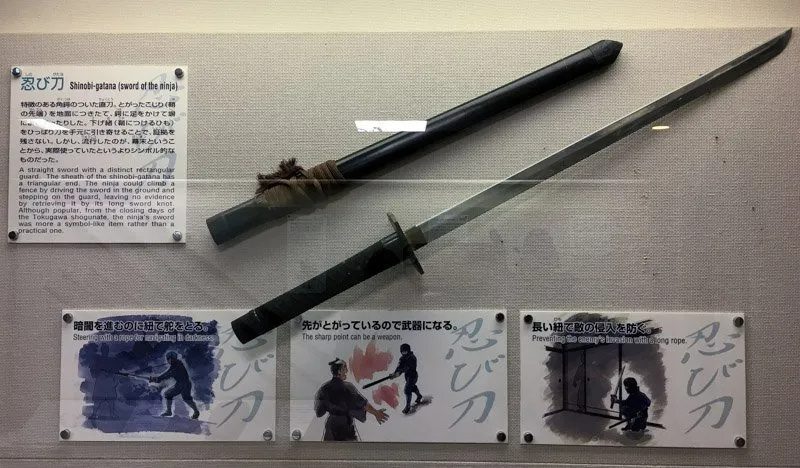
The ninjas mostly used single-edged, straight swords and rarely double-edged blades for stabbing. Therefore, most reproductions of ninjato swords today feature a straight blade. Historically, the ninjas also utilized curved blades or concealed blades in the form of a stick.
Size and Length
A ninja sword was typically shorter than the long swords used by the samurai. Its blade length varied but usually had the size of a short sword, ranging between 30 and 60 cm long (11 to 23 inches).
The shorter length gave ninjas an advantage when pulling the sword from the scabbard. It also allowed them to travel undetected and fight efficiently within enclosed spaces. However, some accounts mention that the ninja used both long and short swords.
Sword Mounting

The ninja sword traditionally had a long handle (tsuka), an undecorated sword guard (tsuba), and a plain scabbard (saya). Its sageo, a cord for securing the scabbard on the belt, was quite long. Its length allowed the ninja to trap incoming weapons, such as spears, staffs, or even the hands and feet of their enemies.
Despite the sword’s long handle, the ninja sometimes used it single-handedly, allowing the other hand to punch, grab, and such while the sword was still in action. The ninja usually wore his sword on his left side and sometimes on his back. However, the latter would make executing fast-draw techniques, rolls, and flips harder.
Ninja Sword vs. Katana Sword
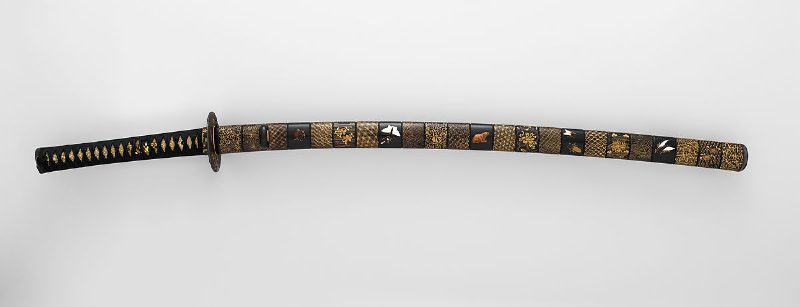
The ninja sword functioned as a stabbing weapon, unlike the katana, which was primarily used for slashing. It was generally shorter than a katana blade which measured over 60 centimeters (23 inches). Also, the ninjato tended to have a longer handle (tsuka) than the samurai sword.
The katana sword used by the samurai was finely crafted from tamahagane and had artistic features on the blade. On the other hand, ninja swords were often crafted simply and roughly in a home workshop. Some ninjas also use shortened and converted broken swords found on the battlefield.
The ninja preferred straight blades similar to a chokuto sword, and rarely used curved ones. The katana served as the symbol of the samurai and often came in elaborate mountings. Meanwhile, the ninja sword functioned as a mere weapon or tool and was not ornamental.
Unconventional Uses of Ninja Swords
The ninjas used their swords in unexpected ways which often helped in defeating their opponents. Ninja swords served as multi-functional tools and deadly weapons.
- The ninja occasionally drew the sword with his left hand.
Placing the right hand on the sword’s handle often implied that a warrior was ready to fight. To deceive their enemies, the ninjas usually pulled their swords out from the scabbard using the left hand, followed by striking the opponent’s ribs with the end of the handle. In some circumstances, a ninja drew the sword behind his back.
- The ninja used the sword and scabbard together.
While wielding the sword in one hand, the ninja used the scabbard in his other hand for blocking, striking, and swinging to confuse the opponent. In some instances, the scabbard was functional for removing obstacles when moving through bushes while the sword was ready to be used.
- The scabbard and sageo cord sometimes served as a catapult and a bullet.
The ninjas sometimes launched the scabbard from the sageo, a rope used for tying the sword to the belt. They usually targeted their enemy’s eyes, nose, or stomach. Even though the scabbard did not cause damage, it helped in confusing the opponent.
- The tsuba often served as a foot pedestal.
By leaning the sword on the wall, a ninja could step on the tsuba and go higher. A long rope was often attached to both the scabbard and ninja’s body so he could retrieve the sword. Sometimes, hooking the tsuba through the branches helped a ninja to pull himself higher.
- The scabbard had several unconventional uses.
The ninja sometimes utilized the hollow space in a scabbard for storing blinding powders and explosives. It also served as an underwater breathing tube, allowing him to swim without being noticed. In some instances, the scabbard functioned as an improvised blowgun used with poison darts.
- A ninja sword served as a multipurpose weapon tool.
A ninja sometimes utilized his sword to open locked doors. It can also function as an improvised grappling hook (kaginawa) by attaching a long rope or sageo cord to the tsuba and the scabbard.
Historical Facts About the Ninjas and Their Swords
The term ninja comes from Japanese characters nin and ja. Nin means move stealthily and conceal, while ja is the combining form of sha, meaning person.
In films, anime, and books, the ninjas often serve the role of a silent and deadly assassin. They not only used swords in unconventional ways, but also improvised weapons, used mind games, and executed incredible skills.
Here are some other facts you may not know about the ninjas and their swords:
- The term ninja is a relatively modern name.
The earliest names to indicate ninja included kansai, kanchō, gokan, and yōkan. These names vary according to the periods, places, families, and a variety of other factors. By the Asuka period from 592 to 710, the term shinobi—an alternative reading of the character nin—became popular.
There were other alternative names depending on the ninja’s specific role, but the term ninja became the most popular since it is easier for Western speakers. It was first quoted in the Buyō Benryaku in 1684, describing the ninja as people who infiltrate an enemy castle.
- The ninjas were practitioners of ninjutsu and mastered various combat techniques.
Ninjutsu, also called the art of stealth, consisted of several survival techniques using several weapons, including swords, spears, staffs, and sharp blades. They also trained in unarmed combat and using fire or explosives. As assassins and spies, the ninjas were also trained in the art of disguise, concealment, medicine, meteorology, and geography.
- The ninjas were masters of their craft and passed their traditions on to their descendants.
The years of training prepared a ninja for the time he could finally offer his skills and services to one in power. Ninja training usually began at the age of 5, when a child learned the principles of balance. Then, a young ninja became skilled in breathing underwater. In their teenage years, they likely mastered the basics of ninjutsu and other survival skills. When they completed training, they would embark on their first mission.
- The ninja used different types of swords, daggers, and knives.
While the ninjato is mostly thought of as straight-bladed swords, any sword that belonged to the shinobi can be considered a ninja sword. They usually gathered abandoned swords found on the battlefield and then shortened and converted them into various weapons. The ninja also utilized the tachi, katana, wakizashi, kodachi, tanto, iron machete, and other blades.
- The ninja did not always dress in black.
In pop culture, the ninjas are often portrayed in a traditional black costume. However, the ninjas also traveled in disguise to other territories, sometimes dressed up as firewood gatherers to acquire news about their enemy or as one of an enemy’s castle guards. They also served as agitators, often on a battlefield to confuse the enemy.
- The ninjas used several types of exotic weapons.
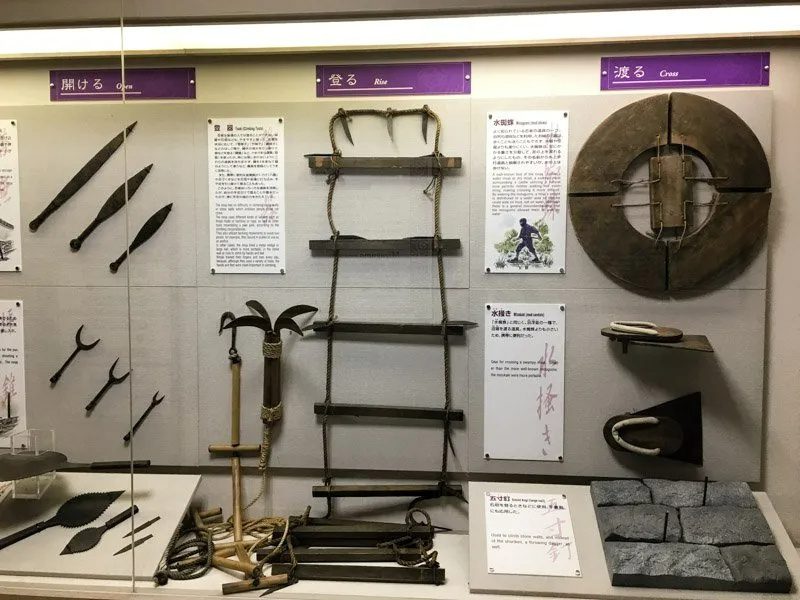
The ninjato sword was efficient for close-range fighting while the shuriken was for distant targets. Other ninja weapons include concealed blades, throwing knives, staffs, and kusarigama (chained sickle). The kunai was a multipurpose metal tool used for climbing walls but also efficient in close-range combat.
- The ninjas used fire and explosives to create diversions.
Many ninjas were skilled at making their explosives from natural ingredients, often to take down doors, walls, and to create force evacuations. In the event of capture, some even used concealed explosives to destroy their facial features—or to take their own lives. Thus, their clan’s identities would remain a secret to the enemy.
The Ninja Sword in Modern Times
Modern-day ninjas who train in ninjutsu continue to preserve the sword techniques used by historical ninjas. They train in sword drawing techniques and cutting skills with live blades. While many use a ninja sword, the cutting skill can be gained with any type of blade. Today, modern ninjas train with every type of blade they can find.
In the Bujinkan Martial Arts system, practitioners train in methods for avoiding sword thrusts and cuts, primarily using a shinai (bamboo sword). They also train using a suburito, a heavy wooden sword to strengthen their wrists and shoulders. Also, modern-day ninjutsu consists of unarmed fighting, weapons training, and other survival techniques.
Conclusion
The ninjas and their weapons remain a subject of fascination in modern times. The ninja sword played a significant role in both training and fighting. Unlike the Japanese katana, the ninjato was regarded as a mere weapon tool. Today, the sword and various ninja weapons remain relevant in pop culture and martial arts.
